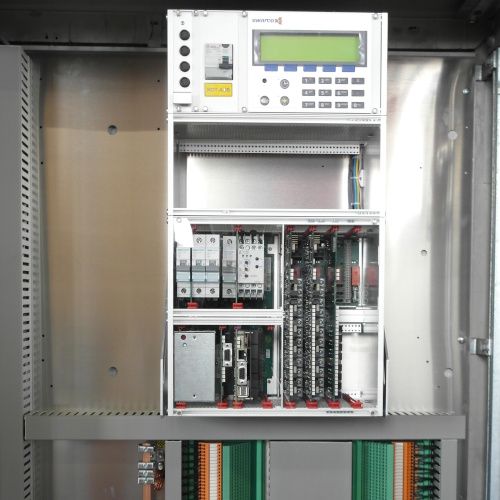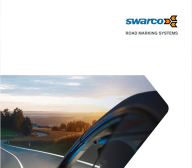ACTROS. ALPHA.FIX
Compact efficiency


The new ACTROS.alpha.fix is the latest version of the traffic controler family and is designed and optimized
specifically for use on smaller and medium-sized traffic junctions. It is an ideal addition to the well-known ACTROS family.
Thanks to its compact design, the ACTROS.alpha.fix requires only a minimum of energy and space. It is based on the
known features of the ACTROS family, such as ease of maintenance, stability and security of investment thanks to compatibility. In addition, all known ACTROS interfaces are supported. These include, for example, OCIT®, ACTROS.connect, canto®, as well as control cores and peripheral components (TOPic-ready, public transport prioritization, blind clearance).
48 independently switchable and monitorable outputs are available for modern, energy-saving 40V-LED signal heads for traffic engineering implementation. Information can be read in and requests can be switched via 32 inputs and 16 outputs.
The control unit is integrated directly into the rack and allows full access to operating parameters. In addition, the user has an overview via the graphic display: Switching on and off, manual operation and switching programs and control levels are just some of the options that are available to the user.
With the ACTROS.alpha.fix, LISA+ or Java, as the tried and tested language of the ACTROS family, continue to be used.
Benefits
- Minimal size in the standard size 1 cabinet, or alternatively in the size 2 cabinet.
- ntegrated 40V-toroidal core transformer with inrush current limiting
- Easy expandability thanks to free 3 HE rack space
- Easy installation, since the terminals are permanently assigned to the outputs
- Connection of the outdoor installation on optimized terminal units directly to tension spring clamp terminals
- Four terminals are available per lamp output
- Dimensioned for 40V-LED signal head voltage
- Uses the proven electronic assemblies of the ACTROS family
- Fully ACTROS compatible thanks to ACTROS.fusion technology
- Ready to use size 2 mounting plate ensures quick on-site replacement
- Safety according to DIN EN 50556 and SIL 3 EN 61508
Technical Details
| HOUSING (OPTIONAL): | |
| Standard cabinet with / without EVU component EVU component | Sizes 0, 1, 2 according to DIN 43629 Section 1, IP54 |
| Size of the traffic controller (WxHxD) | 190 x 420 x 200 mm |
| ELECTRONIC CONTROLS: | |
Max. number of signal groups | 48 |
Max. number of lamp outputs | 48 |
Number of I/Os | 32 inputs, 16 outputs |
Detectors | Connection also possible via CAN bus |
Traffic-engineering controls | Fixed-times programme, clock control, signal group-oriented and phase-oriented |
Controls for centralised operation / interface | OCIT V1.1, V2.0 an V3.0 as well as Profile 2 and Profile 3, |
Cycle for traffic engineering | 0,5 s, 1 s |
| Time source | DCF77, GPS, NTP (via centralised interface) |
| Signal sequence | Freely programmable, standard according to RiLSA R |
| Local public transport | 09 telegrams in accordance with Standard VÖV 04.05.1 |
| Signal circuit breaker | Setup in error-proof technology, current and voltage monitoring for all lamp outputs according to DIN VDE 0832, Section 100 and RiLSA |
| PERFORMANCE ELECTRONICS: | |
| Max. power consumption w/o lamp power | 74 VA |
| Mains voltage | 230 V (-15 ... +10%) |
| Mains frequency | 50 Hz (-5 ... +5%) |
| Permissible LED signalling device voltages | 40 V OCIT |
| Lamp output per signal output | 1 - 40 W |
| Max. lamp output per traffic controller | 400 W |
| ENVIRONMENTAL CONDITIONS: | |
| Temperature Range | |
| CERTIFICATION: | |
| TÜV Rheinland | DIN VDE 0832-100: 2010, DIN VDE V 0832-110: 2013, DIN V VDE V 0832-500: 2008, EN12675: 2015, SIL3 acc. EN 61508 (Part 1 to 7): 2010, EN50556:2011 |
